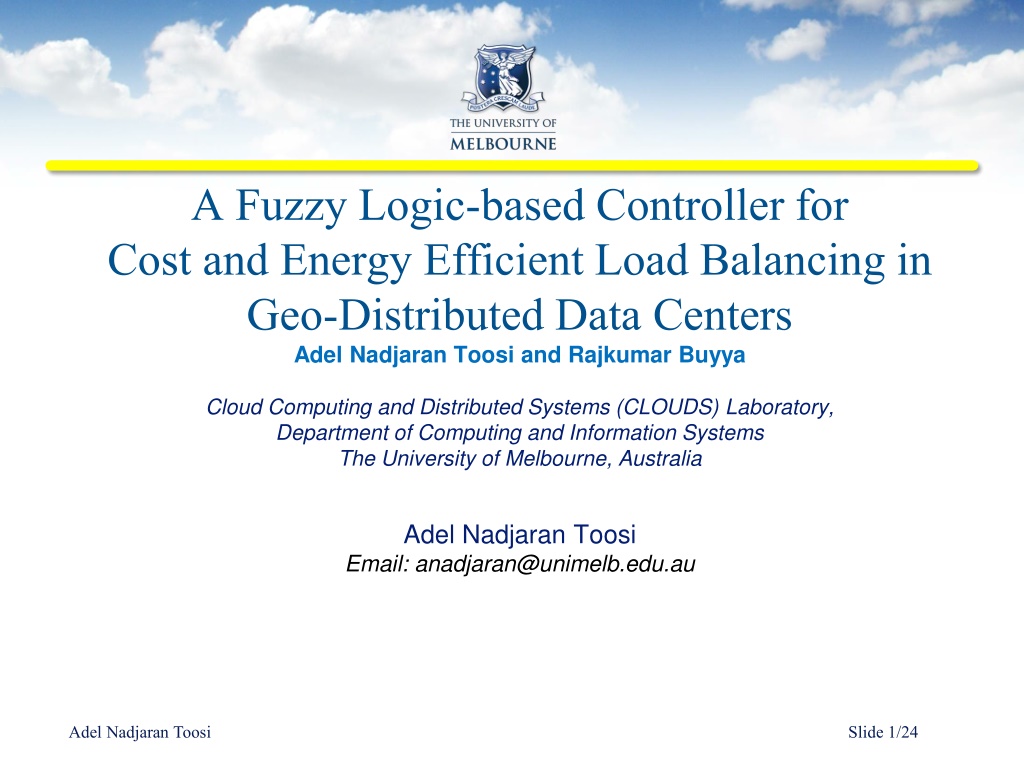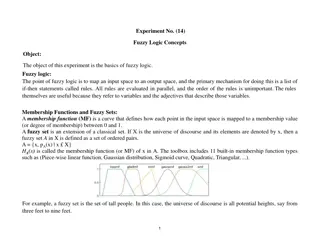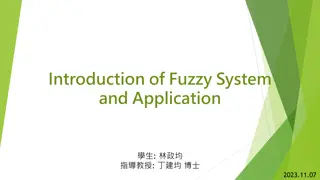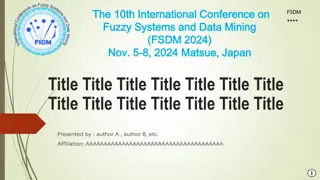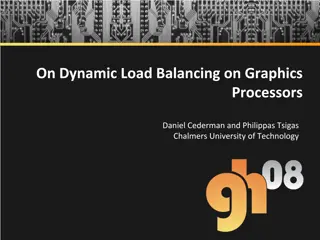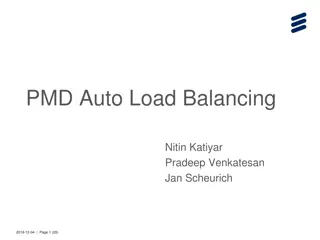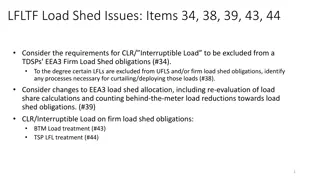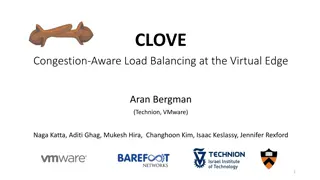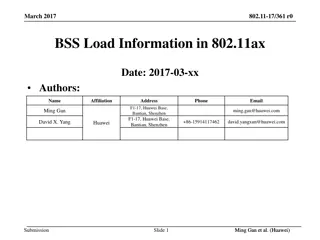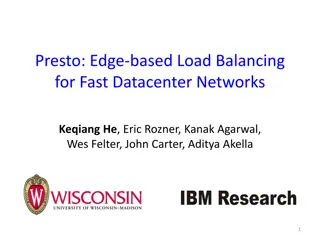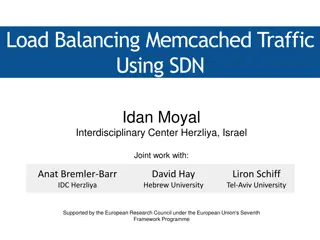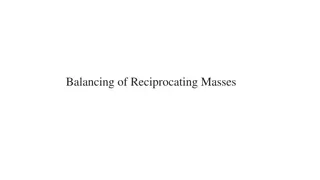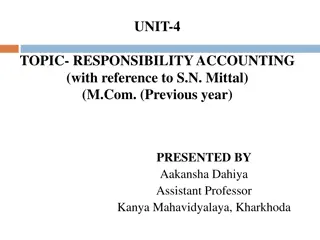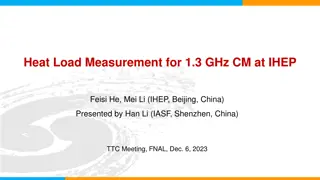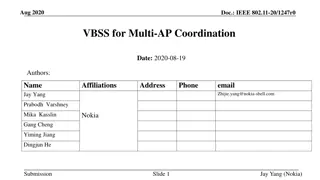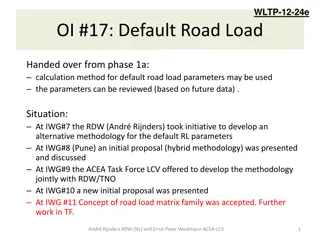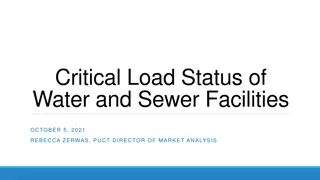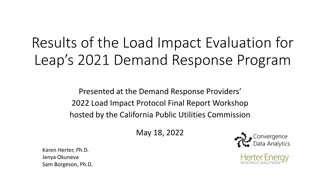Fuzzy Logic Controller for Cost-Efficient Load Balancing in Data Centers
Large energy consumption in data centers leads to high operational costs and significant environmental impact. This study explores the challenges of using renewable energy sources for load balancing in geo-distributed data centers, proposing a fuzzy logic-based controller to optimize energy efficiency. The aim is to minimize brown energy usage and maximize renewable energy utilization through geographical load balancing. Experimental results show promising performance improvements in cost and energy efficiency.
Uploaded on Sep 22, 2024 | 0 Views
Download Presentation

Please find below an Image/Link to download the presentation.
The content on the website is provided AS IS for your information and personal use only. It may not be sold, licensed, or shared on other websites without obtaining consent from the author. Download presentation by click this link. If you encounter any issues during the download, it is possible that the publisher has removed the file from their server.
E N D
Presentation Transcript
A Fuzzy Logic-based Controller for Cost and Energy Efficient Load Balancing in Geo-Distributed Data Centers Adel Nadjaran Toosi and Rajkumar Buyya Cloud Computing and Distributed Systems (CLOUDS) Laboratory, Department of Computing and Information Systems The University of Melbourne, Australia Adel Nadjaran Toosi Email: anadjaran@unimelb.edu.au Adel Nadjaran Toosi Slide 1/24
Outline Introduction Large energy consumption in data centers Renewable energy sources Challenges of using renewable energy Geographical load balancing Optimal Offline Algorithm and its intractability Fuzzy Logic-based Load Balancing Performance Evaluation Experimental Setup Results Conclusions Adel Nadjaran Toosi Slide 2/24
Large Energy Consumption Data centers used for hosting cloud applications consume large amount of electricity High operational cost for the cloud providers High carbon footprint on the environment. According to the US Natural Resources Defense Council, (www.nrdc.org): US data centers alone consumed 91 billion kilowatt-hours of electricity, equivalent to two-year power consumption of all households in New York city This is projected to be responsible for the emission of nearly 50 million tons of carbon pollution per annum in 2020. Adel Nadjaran Toosi Slide 3/24
Renewable Energy Cloud service providers are working hard: To reduce their energy consumption Their dependence on power generated from fossil fuels (i.e., Brown energy) Using renewable energy Direct investments in on-site green power generation Companies such as Google, Microsoft and Amazon Amazon Web Services (AWS) is building a wind farm that will be operational by end-2016 that generates 40 percent of its electrical usage from renewable energy sources Adel Nadjaran Toosi Slide 4/24
Challenge Intermittency and unpredictability of renewable energy sources Powering data centers entirely with renewable energy sources is difficult. Sources of energy for data centers: Grid power or brown energy Renewable energy sources or green energy Challenge: To minimize brown energy usage To maximize renewable energy utilization Adel Nadjaran Toosi Slide 5/24
Geographical Load Balancing (GLB) Geographical load balancing (GLB) potentials: Follow the renewables: Reducing brown energy usage Maximizing renewable energy utilization GLB approach benefits cloud providers but it raises an interesting, and challenging question: with limited or even no a priori knowledge of the future workload, and dynamic and unpredictable nature of renewable energy sources, how does one allocate requests to each data center such that the total cost of power consumption is minimized and the overall renewable energy utilization is maximized? Adel Nadjaran Toosi Slide 6/24
Optimal Offline Algorithm We assume the following information are known to a certain time window: Future knowledge of renewable energy availability Workload (i.e., number of requests, arriving time and duration of requests) We characterized the optimal offline GLB We showed that the optimal strategy is computationally intractable. Formal discussion can be found in the paper, we give a simple informal example. Adel Nadjaran Toosi Slide 7/24
Example: Offline GLB Problem Adel Nadjaran Toosi Slide 8/24
Time Complexity A decision tree by branching factor n upto m levels. n: number of data centers m: number of requests A path from the root to a leaf of the tree that generates the lowest cost determines the optimal solution. This leads to the O(nm) different state variables. Offers an exponential time complexitry given a bounded number of data centers. The complexity can be improved using techniques such as branch and bound. It does not reduce the worst-case time complexity. If the lifetime of requests is bounded and is considerably smaller than the window, we can improve time complexity using a dynamic programming technique. Adel Nadjaran Toosi Slide 9/24
Fuzzy Logic-based Load Balancing (FLB) We present a fuzzy logic-based load balancing algorithm that only uses recent data history to tackle the geographical load balancing problem. Why fuzzy logic? Fuzzy logic is conceptually easy to understand and mathematical concepts behind fuzzy reasoning, even though subtle, are very simple. Fuzzy logic systems are good at dealing with uncertainty and lack of perfect information. Fuzzy logic reasoning is among the best techniques, for solving non- linear systems with an arbitrary complexity and large number of inputs. Adel Nadjaran Toosi Slide 10/24
A Typical Fuzzy Inference System Sample fuzzy rule: if height is very high and weight is very low then healthiness is low Adel Nadjaran Toosi Slide 11/24
Fuzzy Logic-based Load Balancing (Inputs and Output) Input values computed within a window of sizeW in the recent history for Datacenter i: The utilization of renewable energy sources (Ui): is a value in the range [0, 1] and is computed as the ratio of the number of used to the total number of available renewable power units. Amount of brown energy consumption (Bi):is a value in the range [0, + ) and is computed as the ratio of the total number of units of brown power units used to the total number of available renewable power units. Average price of electricity in the location (Fi): is the average price for an unit of power. Output (Varies between 0 and 1) specifies the suitability of each data center for routing the request, where 0 shows the lowest suitability and 1 shows the highest suitability. Adel Nadjaran Toosi Slide 12/24
Fuzzy Logic-based Load Balancing (Membership Functions) Adel Nadjaran Toosi Slide 13/24
Fuzzy Logic-based Load Balancing (Fuzzy Rules) Adel Nadjaran Toosi Slide 14/24
Performance Evaluation We conduct experiments based on simulation to study the performance of fuzzy logic-based load balancing (FLB). CloudSim, a discrete-event Cloud simulator. Our aim is to understand the renewable energy utilization and cost performance of FLB in realistic settings. In order to achieve our goal, we consider a case study based on real-world traces for the workload, renewable availability, and electricity prices. Adel Nadjaran Toosi Slide 15/24
Experimental Setup (Workload Setup) Traces of Google cluster-usage Google cluster of 12K physical servers 933 users Over a time period of 29 days Devised Scheduling algorithm Adel Nadjaran Toosi Slide 16/24
Experimental Setup (Configuration of data centers) Adel Nadjaran Toosi Slide 17/24
Experimental Setup (Renewables and Electricity prices) Renewable Energy Meteorological data traces database of National Renewable Energy Laboratory (NREL) Wind turbines (GE 1.5MW wind turbine with efficiency of 40%) and solar panels (500m2with efficiency of 30%) The model proposed by Fripp and Wiser is employed where the wind speed, the air temperature, and the air pressure measurements in the location of each data center fed into the model. Electricity prices Wholesale electricity price information for each hub is collected from the website of Energy Information Administration (EIA) Adel Nadjaran Toosi Slide 18/24
Experimental Setup (Renewables and Electricity prices) Wholesale electricity market price for the hubs Renewable power generation for five days. Adel Nadjaran Toosi Slide 19/24
Benchmark Algorithms: Future-Aware Best Fit (FABEF): it routes each request to a data center leading to the lowest cost of the request accommodation irrespective of upcoming requests. Round Robin (RR): It routes requests to data centers in circular order with null information about the status of data centers. Highest Available Renewable First (HAREF): It routes requests to the data center with the highest amount of available renewable energy at the current time slot. Adel Nadjaran Toosi Slide 20/24
Results The green power utilization of different algorithms normalized to the outcome of the RR algorithm. The total cost of different algorithms normalized to the outcome of the RR algorithm. Adel Nadjaran Toosi Slide 21/24
Results Effect of window size on the total cost performance of FLB and FABEF normalized to the outcome of the RR algorithm. Adel Nadjaran Toosi Slide 22/24
Conclusions We also showed that optimal offline geographical load balancing is hard to achieve even if the perfect future knowledge about upcoming requests and their characteristics (i.e., arrival, size and lifetime), availability of renewable energy sources, and electricity price are known in advance. We proposed a fuzzy logic-based algorithm for cost and energy efficient load balancing among multiple data centers of a cloud service provider. Our evaluation using simulation of a case study designed according to real-world traces of workload, renewable energy sources, and electricity market prices showed that our proposed method is able to significantly reduce the cost of the cloud provider. Adel Nadjaran Toosi Slide 23/24
THANK YOU Questions? Adel Nadjaran Toosi Slide 24/24
